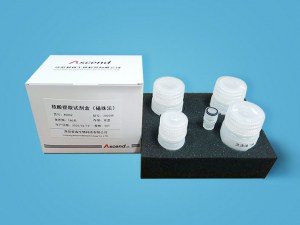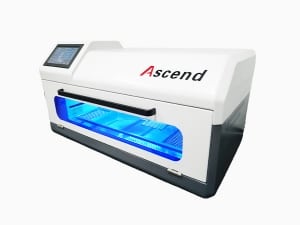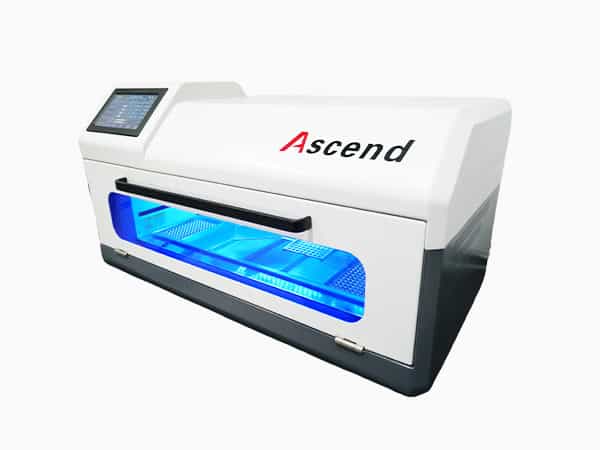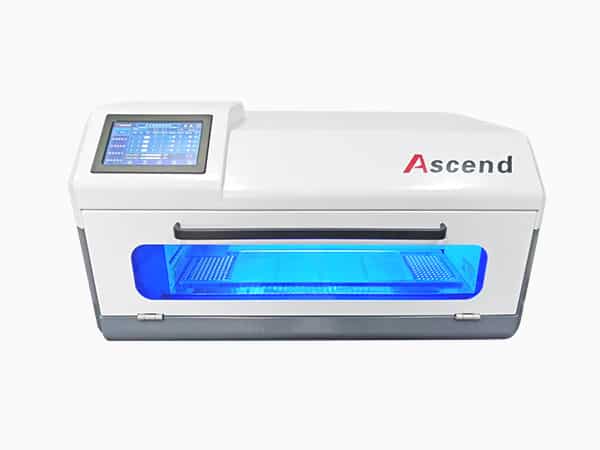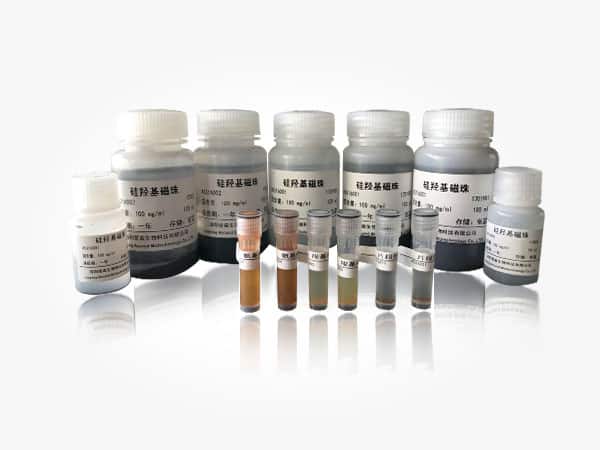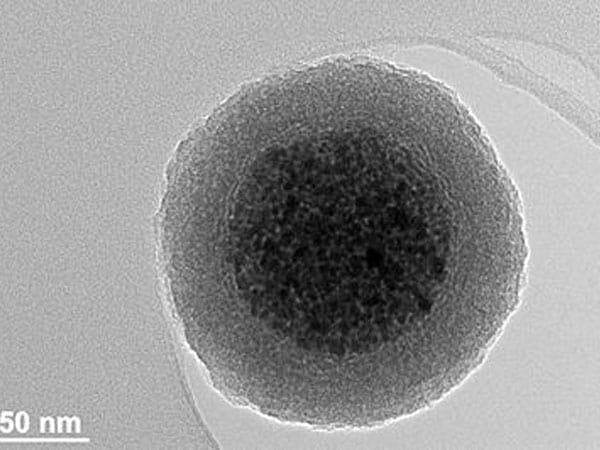A reporter from the Beijing News noted that BGI has raised funds several times in the past two years, with more than 40 institutional shareholders behind it.
The prospectus shows that before going public, BGI has mainly experienced three rounds of financing: in 2012 for BGI Technology, BGI Medical in 2014, and 2015 after the medical and technology reorganization of BGI shares.
In 2012, Huada Holdings announced the acquisition of Complete Genomics, a US gene sequencing company. In order to raise funds, Huada sold 42% of its subsidiary Huada Technology and raised 1.398 billion yuan. It was led by Sequoia Capital and China Everbright, Shenzhen Venture Capital , Yunfeng Investment, Jinglin Assets, Taishan Investment, Softbank China, Shengqiao Investment and other well-known institutions are shortlisted for financing.
In May 2014, BGI began to introduce external institutional investors. According to the overall valuation of 10 billion, 8 external institutional investors increased the registered capital of BGI by a total of 295 million yuan, which accounted for 2.0824 million yuan of registered capital after the capital increase. 3.35%.
In the first half of 2015, Huada Medical once again introduced external investment institutions such as Heyu Gaolin and China Life Insurance, and based on the overall valuation of approximately 19.1 billion yuan in the total equity value of Huada Medical and Huada Technology before the investment as the capital increase and transfer Pricing basis. Among them, Shenzhen Heyu Gaolin acquired 35,849,600 shares of Huada Medical with a capital investment of 2 billion yuan, becoming the third largest shareholder after Huada Holdings and Huada Investment.
Statistics show that after three rounds of financing, BGI, with BGI Medical and BGI Technology as the main body, introduced more than 40 institutional investors, with a total investment of 7.215 billion yuan, while BGI has cashed out 4.296 billion. yuan.
The pre-IPO valuation of Huada Gene was as high as 19 billion yuan. After experiencing a lower limit on August 11, the market value of Huada Gene was around 38 billion yuan. In the last round of shares in Huada Gene, the book value was only about double. Taking Rongzhilian as an example, it once disclosed that the cost of investing in Huada Gene was 35 million yuan. Today, the market value of BGI’s shares held by Rongzhilian is 89.714 million yuan. However, the prospectus shows that shareholders of Huada Genetics Institution will be able to lift the ban after one year.
Regarding the market value of Huada Gene, the valuation given by securities firms is not high. The Beijing News reporter noted that since the IPO of Huada Gene, more than 14 brokerage agencies have issued research reports on it. The highest stock price of the brokerage institution for Huada Gene is 94.4 yuan per share, and the lowest is 46.35 yuan per share.
In the latest research report, Caitong Securities analyzed that Huada Gene’s reasonable market value was 25.83 billion-34.44 billion yuan, corresponding to a reasonable range of 64.57-86.09 yuan in 2017. Southwest Securities gave BGI a P/E ratio of 60-80 times in 2017, corresponding to a reasonable market value range of 25.8 billion-34.4 billion yuan, and a stock price range of 70.8-94.4 yuan.
Zero2IPO’s return on IPOs with institutional support for listing in the first quarter of this year shows that Shenzhen’s GEM listed companies had an average book investment return of 2.42 times on the date of issue, and after 20 trading days of listing, the average book return of institutions was 9.44. Times. BGI now happens to be listed on the 20th day of trading. Calculated at a rate of return of 9.44 times, the market value should be 100 billion yuan, much higher than the current market value of BGI.
Reproductive health services account for more than half of revenue
According to the prospectus, from 2014 to 2016, BGI’s operating income was 1.132 billion yuan, 1.319 billion yuan and 1.711 billion yuan, and net profits were 59 million yuan, 272 million yuan and 350 million yuan respectively. Among them, reproductive health services have been BGI’s main source of revenue in recent years, accounting for an increase from 31.71% in 2014 to 54.62% in 2016.
In 2016, reproductive health services brought BGI Gene’s revenue of 929 million yuan, with a gross profit margin of 76.41%. BGI’s prospectus shows that the service items provided by reproductive health services mainly include non-invasive fetal chromosomal abnormality detection, neonatal deafness gene detection, neonatal genetic metabolic disease screening, and single gene disease detection. Among them, non-invasive prenatal screening (NIPT) to prevent neonatal defects is the most mature field of clinical application of gene sequencing.
BGI did not disclose its NIPT market share in the prospectus, but the backdoor announcements of its peers, Berry and Kang, can compare the situation of BGI. Berry and Kang, founded in 2010, also originated from BGI. The reorganization plan of Berry and Kang Backdoor *ST Tianyi shows that its founder and chairman Gao Yang previously served as the general manager of the BGI Gene Health Division.
Berry and Kang disclosed in the backdoor restructuring plan that in 2016, it achieved revenue of 922 million yuan. Berry Hekang’s business is almost all non-invasive prenatal genetic testing and instrument kit sales, similar to BGI’s reproductive health genetic testing services. In 2016, the reproductive health services brought BGI’s revenue of 929 million yuan. .
Berry Hekang disclosed in the backdoor restructuring plan that in 2016, Berry Hekang’s market share in the domestic NIPT service sector was approximately 33.06%-37.19%. BGI’s revenue in the NIPT service field is similar to that of Berry and Kang, and their market share should be similar.
The NIPT industry report shows that my country’s NIPT market was basically monopolized by BGI and Berry and Kang in the early stage. In 2013, BGI and Berry and Kang accounted for 46%, and Berry and Kang accounted for 40%. Looking at the latest market share of BGI, Berry and Kang, BGI has declined significantly. The report said that in the field of genetic testing services for reproductive health, where the market is gradually stabilizing, competition among companies will become more intense.
Has 1.6 billion yuan of wealth management products before listing
Compared with other companies that choose to go public for financing to obtain corporate development funds, BGI can be described as “not bad money”. The prospectus shows that the debt ratio of BGI in 2014 was only 28.47%, and the debt ratio has continued to decline in the following two years. By the end of 2016, BGI’s total debt was 778 million yuan, and the total assets of the same period were 4.23 billion yuan, and the debt ratio was only 18.38%. .
In the breakdown of BGI’s liabilities, its main liabilities are operating liabilities, among which the amount of advance accounts received over the years is relatively large, and the proportion of liabilities exceeds 50%. In 2016, BGI Gene received 438 million yuan in advance, accounting for 56.3% of total liabilities.
Financial liabilities account for very little in the balance sheet of BGI. From 2014 to 2016, BGI Gene’s short-term loans over the years were all in the millions. At the end of 2016, BGI’s short-term loan was only 3 million yuan, and there was no long-term loan.
With little financial liabilities, BGI’s assets have grown rapidly in the past two years. In 2014, BGI Gene’s total assets were 2.05 billion yuan. At the end of 2016, the total assets data increased to 4.23 billion yuan, and the total assets doubled in two years.
The increase in BGI’s assets is mainly reflected in other current assets. In 2014, BGI’s other current assets were only 12.5142 million yuan, which increased to 1.883 billion yuan in 2015. Although it decreased in 2016, it was still as high as 1.726 billion yuan. Yuan, accounting for 53.89% of BGI’s current assets.
BGI’s prospectus shows that in its billions of other current assets, bank wealth management products account for almost all. For example, among other current assets of 1.883 billion yuan in 2015, the balance of wealth management products and interest was 1.86 billion yuan, accounting for 98.79%.
As of the end of 2016, the related wealth management products and interest sold by large commercial banks such as Bank of China, Industrial and Commercial Bank of China, and Agricultural Bank of BGI totaled 1.609 billion yuan. That year, BGI’s interest income increased to 73,465,800 yuan.
The funds used by BGI to purchase wealth management may be derived from its financing income in recent years. The prospectus shows that in 2015, the net cash activity generated by BGI’s financing activities was 1.651 billion yuan. At the end of 2015, the balance of BGI’s monetary funds increased by less than 8 million yuan compared with 2014. In the same period, BGI’s The net outflow of foreign investment was 1.978 billion yuan.
The debt ratio is low, and most of the more than one billion yuan in foreign financing is used to purchase bank financing, which shows that BGI is “not bad for money.” The prospectus shows that BGI’s IPO raised an amount of 547 million yuan and the net amount of funds raised was 483 million yuan, which is only equivalent to 30% of BGI’s financial management funds at the end of 2016.
Most of the funds raised by the IPO are still used by BGI to purchase wealth management products. On August 11, BGI announced that it decided to use temporarily idle raised funds with a quota of no more than 300 million yuan for cash management and purchase high-security bank-guaranteed wealth management products.
The current stock price exceeds the target price given by the broker
A reporter from the Beijing News noted that BGI has raised funds several times in the past two years, with more than 40 institutional shareholders behind it.
The prospectus shows that before going public, BGI has mainly experienced three rounds of financing: in 2012 for BGI Technology, BGI Medical in 2014, and 2015 after the medical and technology reorganization of BGI shares.
In 2012, Huada Holdings announced the acquisition of Complete Genomics, a US gene sequencing company. In order to raise funds, Huada sold 42% of its subsidiary Huada Technology and raised 1.398 billion yuan. It was led by Sequoia Capital and China Everbright, Shenzhen Venture Capital , Yunfeng Investment, Jinglin Assets, Taishan Investment, Softbank China, Shengqiao Investment and other well-known institutions are shortlisted for financing.
In May 2014, BGI began to introduce external institutional investors. According to the overall valuation of 10 billion, 8 external institutional investors increased the registered capital of BGI by a total of 295 million yuan, which accounted for 2.0824 million yuan of registered capital after the capital increase. 3.35%.
In the first half of 2015, Huada Medical once again introduced external investment institutions such as Heyu Gaolin and China Life Insurance, and based on the overall valuation of approximately 19.1 billion yuan in the total equity value of Huada Medical and Huada Technology before the investment as the capital increase and transfer Pricing basis. Among them, Shenzhen Heyu Gaolin acquired 35,849,600 shares of Huada Medical with a capital investment of 2 billion yuan, becoming the third largest shareholder after Huada Holdings and Huada Investment.
Statistics show that after three rounds of financing, BGI, with BGI Medical and BGI Technology as the main body, introduced more than 40 institutional investors, with a total investment of 7.215 billion yuan, while BGI has cashed out 4.296 billion. yuan.
The pre-IPO valuation of Huada Gene was as high as 19 billion yuan. After experiencing a lower limit on August 11, the market value of Huada Gene was around 38 billion yuan. In the last round of shares in Huada Gene, the book value was only about double. Taking Rongzhilian as an example, it once disclosed that the cost of investing in Huada Gene was 35 million yuan. Today, the market value of BGI’s shares held by Rongzhilian is 89.714 million yuan. However, the prospectus shows that shareholders of Huada Genetics Institution will be able to lift the ban after one year.
Regarding the market value of Huada Gene, the valuation given by securities firms is not high. The Beijing News reporter noted that since the IPO of Huada Gene, more than 14 brokerage agencies have issued research reports on it. The highest stock price of the brokerage institution for Huada Gene is 94.4 yuan per share, and the lowest is 46.35 yuan per share.
In the latest research report, Caitong Securities analyzed that Huada Gene’s reasonable market value was 25.83 billion-34.44 billion yuan, corresponding to a reasonable range of 64.57-86.09 yuan in 2017. Southwest Securities gave BGI a P/E ratio of 60-80 times in 2017, corresponding to a reasonable market value range of 25.8 billion-34.4 billion yuan, and a stock price range of 70.8-94.4 yuan.
Zero2IPO’s return on IPOs with institutional support for listing in the first quarter of this year shows that Shenzhen’s GEM listed companies had an average book investment return of 2.42 times on the date of issue, and after 20 trading days of listing, the average book return of institutions was 9.44. Times. BGI now happens to be listed on the 20th day of trading. Calculated at a rate of return of 9.44 times, the market value should be 100 billion yuan, much higher than the current market value of BGI.



